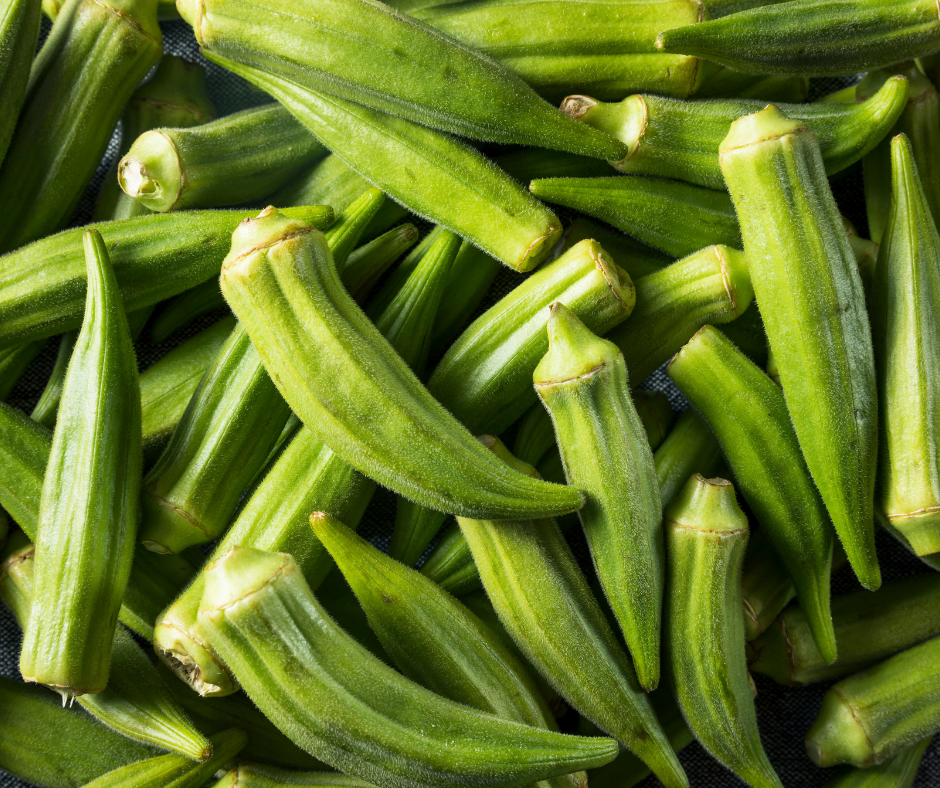Growing Okra in the Home Garden
go.ncsu.edu/readext?938205
en Español / em Português
El inglés es el idioma de control de esta página. En la medida en que haya algún conflicto entre la traducción al inglés y la traducción, el inglés prevalece.
Al hacer clic en el enlace de traducción se activa un servicio de traducción gratuito para convertir la página al español. Al igual que con cualquier traducción por Internet, la conversión no es sensible al contexto y puede que no traduzca el texto en su significado original. NC State Extension no garantiza la exactitud del texto traducido. Por favor, tenga en cuenta que algunas aplicaciones y/o servicios pueden no funcionar como se espera cuando se traducen.
Português
Inglês é o idioma de controle desta página. Na medida que haja algum conflito entre o texto original em Inglês e a tradução, o Inglês prevalece.
Ao clicar no link de tradução, um serviço gratuito de tradução será ativado para converter a página para o Português. Como em qualquer tradução pela internet, a conversão não é sensivel ao contexto e pode não ocorrer a tradução para o significado orginal. O serviço de Extensão da Carolina do Norte (NC State Extension) não garante a exatidão do texto traduzido. Por favor, observe que algumas funções ou serviços podem não funcionar como esperado após a tradução.
English
English is the controlling language of this page. To the extent there is any conflict between the English text and the translation, English controls.
Clicking on the translation link activates a free translation service to convert the page to Spanish. As with any Internet translation, the conversion is not context-sensitive and may not translate the text to its original meaning. NC State Extension does not guarantee the accuracy of the translated text. Please note that some applications and/or services may not function as expected when translated.
Collapse ▲Okra is a warm-season crop that is a staple in many home gardens. It is a tall, upright plant with a hibiscus-like flower that originated in Africa. The immature, young seed pods are the edible part of this plant and are an important ingredient in southern cuisine.
 Okra grows best at temperatures between 75 and 90°F. When planting okra, you want to ensure that the soil temperature is warm enough so that seeds germinate and begin to grow. The optimum soil temperature for seed germination is between 70 to 95°F, so you will want to check the soil temperature at a depth of 4” before planting. If soil temperatures are less than 65 °F, at a soil depth of 4”, you should hold off on planting until soil temperatures are warmer. If you may have mulch on the soil, pull it back to allow the soil to warm up. Okra should be grown in full sun. The most important point to know is that the soil be well-drained.
Okra grows best at temperatures between 75 and 90°F. When planting okra, you want to ensure that the soil temperature is warm enough so that seeds germinate and begin to grow. The optimum soil temperature for seed germination is between 70 to 95°F, so you will want to check the soil temperature at a depth of 4” before planting. If soil temperatures are less than 65 °F, at a soil depth of 4”, you should hold off on planting until soil temperatures are warmer. If you may have mulch on the soil, pull it back to allow the soil to warm up. Okra should be grown in full sun. The most important point to know is that the soil be well-drained.
You can pre-germinate the okra seed by placing it between layers of moistened paper towel for about 24 hours in a warm place. Do not let the seed dry out and be extra gentle when planting so you don’t break the root tip that has emerged.
A few recommended varieties include Clemson Spineless, Cajun Delight, Annie Oakley, and Burgundy, which has beautiful red pods that turn green when cooked and are also used in the floral industry.
Of course, you should apply fertilizer based on a soil test. But if you have not done a soil test, you can apply a fertilizer that would give between 2½ to 5 pounds of nitrogen, phosphorus, and potassium per 1,000 square feet. Okra has a sensitive balance between leaf production and pod production. The use of additional nitrogen should be avoided on vigorous plantings until fruiting begins to manage plant growth and ensure pod production. Irrigation to keep an even supply of moisture for the plants and weed control to reduce competition are important to produce a good crop.
Often in the hottest and driest part of the summer in mid-July to mid-August, okra may slow or cease flower production. If this happens, you can try a method called ratooning – you simply cut the stems to 6-12” above the soil. Then fertilize and irrigate to stimulate new growth, and you will be rewarded with flowers and fruit until frost (not to mention you will be able to reach the fruit to harvest it!).
Okra should be ready to harvest about 60 to 70 days after planting when pods are 2 to 3” long. Usually this means you harvest about every two days. Do not allow pods to mature on the plant because this will inhibit more pods from developing and reduce the total productivity of the plant.
Prime conditions for storing fresh okra are a moist environment and temperatures of 45 to 50°F. Okra should not be washed before storing it in the refrigerator, as this will speed up decay. If properly harvested and handled, and stored correctly, good quality pods can be stored in the refrigerator for about seven days.




